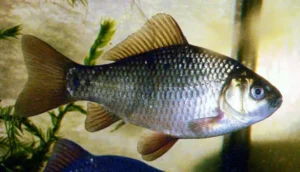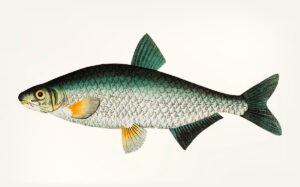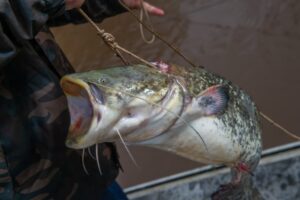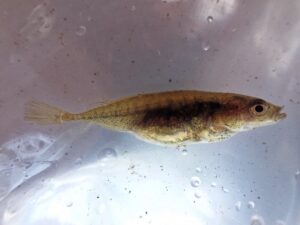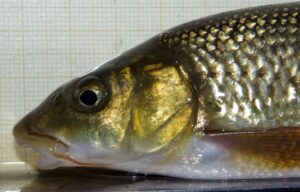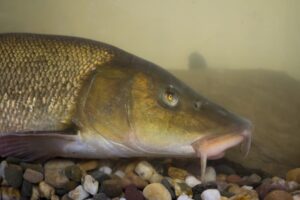Coarse fish: Ide or Orfe (Leuciscus idus)

The Ide or Orfe (Leuciscus idus) is a sturdy freshwater fish that belongs to the same family as the dace but bears a closer resemblance to the roach or rudd, often leading to confusion among anglers.
The Ide or Orfe is a social fish capable of reaching considerable size, making it highly sought after in the realm of aquarium hobbyists. It is not easily caught, and landing a large specimen can bring immense joy to the angler’s sport.
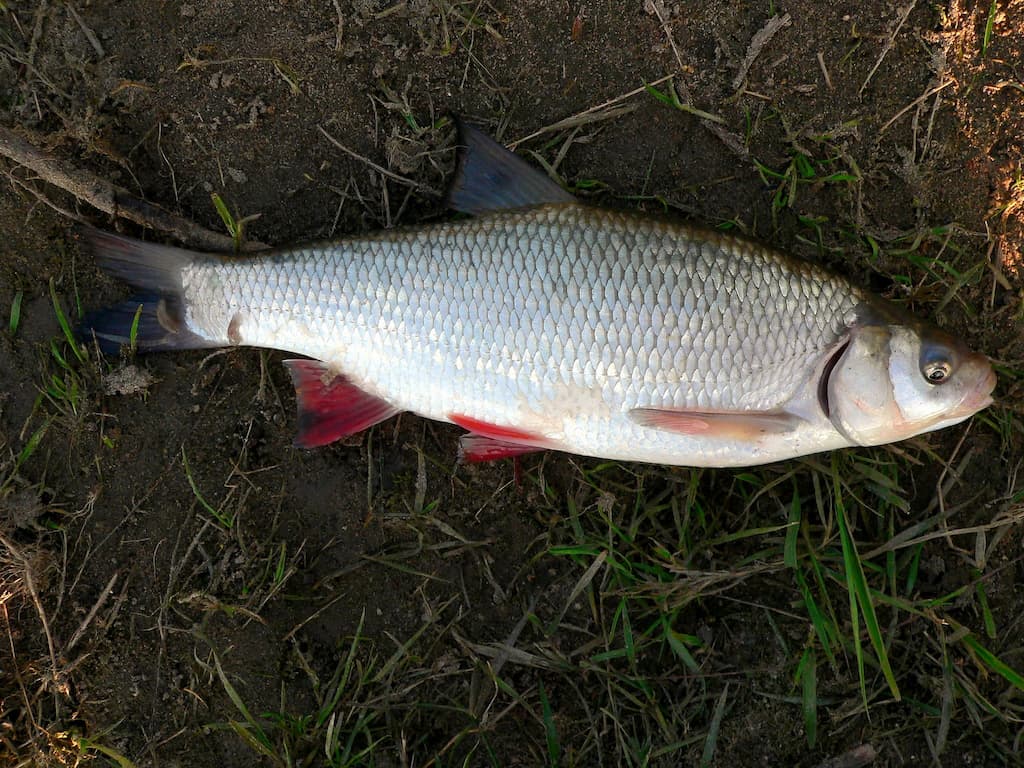
What is an Ide or Orfe?
The Ide or Orfe (Leuciscus idus) is a freshwater fish belonging to the Cyprinidae family. It is often mistaken for the Rudd. The Ide or Orfe is characterized by its black and silver coloration, reaching up to 70 cm in length. Anglers appreciate this fish for its fighting spirit and delectable flesh.
Description of a Fish: Ide or Orfe
Determination
The Ide or Orfe (Leuciscus idus) boasts a robust, elongated body with a slight lateral compression and a gently arched back. It features a small, narrow, and rounded head with a forward and upward-facing mouth, accentuated by well-defined lips. The Ide or Orfe has relatively large yellow-colored eyes compared to its head size.
The dorsal fin of the Ide or Orfe is positioned above the pelvic fins, while the caudal fin is deeply forked, and the anal fin is concave. Its flanks exhibit a silvery coloration, with a whitish belly and a dark green back. The pelvic and anal fins appear pinkish-orange, while the remaining fins are gray in color. The Ide or Orfe possesses 56 to 61 large and silver scales along its lateral line.
| Class |
| Actinopterygii |
| Order |
| Cypriniformes |
| Family |
| Cyprinidae |
| Genus |
| Leuciscus |
| Species |
| L. idus |
| Binomial Name |
| Leuciscus idus (Linnaeus, 1758) |
Size and Weight
The typical size of an Ide or Orfe ranges from 30 to 50 cm, weighing between 200 and 500 grams. The reported maximum size recorded is 85 cm, weighing 4 kg.
Longevity
The average lifespan of the Ide or Orfe is between 10 to 15 years, with a recognized maximum of 18 years.
Habitat and Way of Life
Habitat of the Ide or Orfe
The Ide or Orfe is found in the lower and middle parts of rivers, as well as lakes and ponds throughout Europe, except for southern regions such as Spain, Italy, and Portugal. It is also present in Asia, reaching as far as the Ural Mountains. This fish has been introduced in Great Britain, the USA, and New Zealand, although its presence in Switzerland is uncertain. The Ide or Orfe is a gregarious fish, forming schools of varying sizes during its younger years and becoming more solitary as it matures. It occupies the entire water column, from the bottom to the surface.
Diet
The Ide or Orfe exhibits an omnivorous diet that evolves throughout its life. While young, it mainly feeds on vegetation, benthic invertebrates, insects, mollusks, and crustaceans. As it grows, it becomes carnivorous, preying on fry and small fish. This fish’s unique feeding behavior allows it to be caught using various fishing techniques, such as bottom fishing with baits like maggots or worms, as well as surface fishing with fly or float.
Reproduction
The spawning season for the Ide or Orfe (Leuciscus idus) occurs in spring, typically between April and June. Sexually mature adults migrate to rivers and streams, seeking shallow areas with sandy or gravelly bottoms, rich in aquatic vegetation. In lakes and ponds, spawning takes place in the shallower zones and coves. Females lay between 40,000 to 250,000 eggs, which adhere to gravel and aquatic vegetation. The incubation period lasts 15 to 21 days, and the fry spend their first year in the calmest areas of water bodies.
Significance of the Ide or Orfe (Leuciscus idus) for Fishing
For anglers, the primary significance of the Ide or Orfe lies in its sporting nature. As a robust member of the dace family and a close relative to the chub, it puts up a fierce fight until the very end. Additionally, this fish holds significant value in the realm of aquarium keeping. It is easy to raise, boasts a long lifespan, and exhibits non-aggressive behavior towards smaller fish (unless they are too tiny, in which case they may be seen as tempting appetizers).
Fishing Techniques for the Ide or Orfe
The fishing techniques employed to catch the Ide or Orfe (Leuciscus idus) are similar to those used for roach. It can be caught using a float fishing technique near the bottom, where it responds particularly well to bait such as maggots or worms, especially when targeting larger specimens. The Ide or Orfe can also be caught using hempseed and pearl fishing methods.
Common name for the Ide or Orfe
Orfe is also known as silver orfe or golden orfe in the USA.
Most popular common names for the Ide or Orfe are ide mélanote (french), orfe or nerfling (german), ido (italian), cachuelo (spanish), winde (dutch) and jaz (polish).
Conservation Status of the Ide or Orfe
The Ide or Orfe is classified under the LC (Least Concern) category in the IUCN Red List. The “Least Concern” category designates a widely distributed and abundant species.

